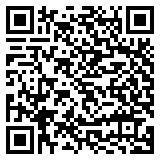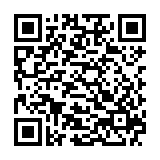Automated transcription services have become a game-changer for businesses, students, and anyone who works with audio or video content. These services promise quick and affordable ways to turn spoken words into text. But how accurate are they? Can they replace human transcribers entirely? Let’s dive into the world of automated transcription, examining its strengths, limitations, and where it stands today in the realm of language services.
What Are Automated Transcription Services?
Automated transcription services use artificial intelligence (AI) and machine learning to convert audio into text. They rely on speech recognition technology to “listen” to spoken words, process them, and create a written record.
Popular services like Otter.ai, Rev.ai, and Sonix are often praised for their speed and cost-effectiveness. But their accuracy depends on several factors, which we’ll explore below.
The Accuracy of Automated Transcription: What Influences It?
The performance of automated transcription tools is influenced by multiple variables:
1. Audio Quality
Clear, high-quality audio is crucial for accurate transcription. Factors like background noise, echo, and static can confuse AI systems. For example, an interview recorded in a quiet office will produce better results than one captured at a bustling café.
2. Speaker Accents and Dialects
AI struggles with unfamiliar accents, regional dialects, or variations in pronunciation. A service trained primarily on American English may find it challenging to accurately transcribe Australian, South African, or Scottish accents.
3. Number of Speakers
The more speakers in an audio file, the harder it is for AI to differentiate between them. Automated tools often have trouble assigning text to the correct speaker in multi-person conversations.
4. Technical Terms and Industry Jargon
Specialized vocabulary, like medical or legal terminology, can trip up AI systems unless they’re specifically trained for that domain. For instance, a tool not optimized for medical transcription might confuse “angioplasty” with a completely unrelated word.
5. Speech Patterns
Fast talkers, mumblers, or those with inconsistent speech patterns can confuse AI systems. Overlapping conversations—where multiple people talk simultaneously—are particularly challenging.
Accuracy Ratings: Human vs. Machine
Studies estimate that automated transcription services typically achieve 85-90% accuracy under ideal conditions (e.g., clear audio and one speaker). However, this number can drop significantly in less-than-perfect situations.
In contrast, human transcribers offer 98-100% accuracy, especially when dealing with complex audio or specific needs like verbatim transcription and speaker identification.
The Pros and Cons of Automated Transcription
Pros:
- Speed: Automated services can process hours of audio in minutes, making them ideal for tight deadlines.
- Affordability: AI-based tools are often cheaper than hiring a human transcriber, with many services offering free or low-cost tiers.
- Convenience: Users can upload files at any time and receive transcripts quickly without waiting for manual input.
Cons:
- Lower Accuracy: AI can misinterpret words or phrases, leading to errors that need manual correction.
- Limited Context Understanding: Machines lack the ability to interpret tone, intent, or cultural context, which can lead to inaccuracies.
- Speaker Differentiation Issues: Identifying and labeling speakers in group discussions remains a challenge.
- No Customization: Unlike human transcribers, AI tools can’t adapt to specific formatting or stylistic preferences.
Can Automated Transcription Replace Humans?
Automated transcription services are a great tool for tasks like:
- Generating rough drafts of transcripts.
- Capturing meeting notes for internal use.
- Creating searchable text for audio or video files.
However, they fall short in high-stakes scenarios, such as:
- Legal Proceedings: Errors in court transcripts could have serious consequences.
- Medical Records: Misinterpreting a term could lead to critical misunderstandings.
- Media Production: Accurate transcription is crucial for subtitles or closed captions, especially in creative content.
In these cases, human transcriptionists remain essential to ensure precision, context, and professionalism.
Improving Automated Transcription Accuracy
While automated transcription isn’t perfect, there are ways to maximize its effectiveness:
1. Enhance Audio Quality
- Use high-quality microphones.
- Record in quiet, controlled environments.
- Eliminate background noise as much as possible.
2. Choose the Right Tool
Some transcription services specialize in specific industries or types of audio. For example, Rev.ai offers customizable models for better handling of unique terms or phrases.
3. Combine AI with Human Editing
Many services allow you to review and edit AI-generated transcripts. A hybrid approach—where AI handles the initial draft and humans refine it—can balance speed and accuracy.
What’s Next for Automated Transcription?
The field of automated transcription is evolving rapidly. Advances in machine learning, natural language processing, and context-aware AI promise even greater accuracy in the future. Emerging technologies may soon:
- Recognize and adapt to different accents and dialects more effectively.
- Improve speaker differentiation in complex conversations.
- Provide real-time transcription with minimal errors.
Conclusion: A Powerful Tool, but Not a Replacement
Automated transcription services are an incredible innovation, offering speed and affordability that were unimaginable a decade ago. While they’re not yet accurate enough to replace human transcribers in all situations, they’re a valuable tool for many everyday tasks.
As technology improves, the gap between human and machine transcription will continue to narrow. However, for now, the best results often come from combining AI’s efficiency with the expertise of skilled human transcribers. After all, when precision and understanding matter most, nothing beats the human touch.





0 Comments